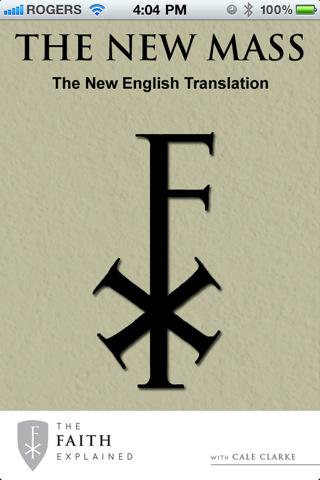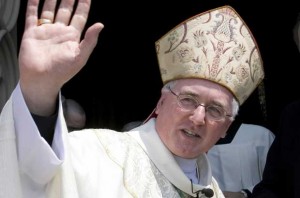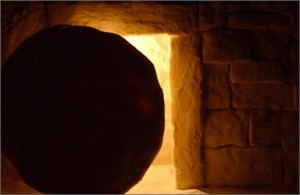 After celebrating morning Mass at the Vatican, Pope Benedict announced that Toronto Archbishop Thomas Collins will be made a member of the College of Cardinals. Archbishop Collins will be given the famous red hat and garments (signifying the readiness of the cardinals to shed their blood, if necessary, in defence of the truth of Catholicism) at a consistory (gathering of bishops) in Rome which will take place February 18-19. By far the most important task of the cardinals is, following the death of a pope, to elect a new pontiff. All cardinals under the age of 80 are eligible to vote in the conclave, the closed meeting in which a successor is chosen. You can check out the mini-site from the intrepid Communications Director for the Archdiocese, Neil MacCarthy, here.
After celebrating morning Mass at the Vatican, Pope Benedict announced that Toronto Archbishop Thomas Collins will be made a member of the College of Cardinals. Archbishop Collins will be given the famous red hat and garments (signifying the readiness of the cardinals to shed their blood, if necessary, in defence of the truth of Catholicism) at a consistory (gathering of bishops) in Rome which will take place February 18-19. By far the most important task of the cardinals is, following the death of a pope, to elect a new pontiff. All cardinals under the age of 80 are eligible to vote in the conclave, the closed meeting in which a successor is chosen. You can check out the mini-site from the intrepid Communications Director for the Archdiocese, Neil MacCarthy, here.
Archbishop Collins, who hails from Guelph, Ontario, was ordained a priest in 1973, and previously served as the Bishop of St. Paul, Alberta, and also as Archbishop of Edmonton. He was named the 10th Archbishop of Toronto in 2006.
On a personal note, I’m absolutely overjoyed for His Grace. He’s a dynamic preacher and teacher, well-known for his Lectio Divina scripture lessons here in Toronto at St. Michael’s Cathedral. For a taste of that teaching, check out the clip below. It’s uncanny how his charism of spiritual fatherhood comes across – one feels as if he is in the presence of the head of a household, imparting precious life lessons to his children. Archbishop Collins also gave invaluable support to me in giving his endorsement to The New Mass app, which I created for the new English translation of the Mass. I’ll be forever grateful for his blessing on the project.










